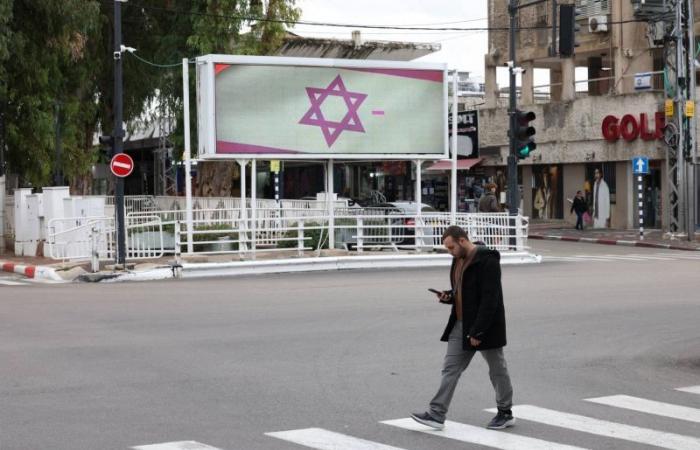After more than a year of rushing to shelters as soon as the sirens sound, the inhabitants of northern Israel are enjoying the calm found thanks to the truce with Hezbollah, however fragile it may be.
The shops are, for the most part, open, the buses are running, people are passing by… In Nahariya, a coastal town within rocket range of Lebanese territory about ten kilometers away, life seems normal again. But schools remain closed, and people are on guard.
Baha Arafat sets up his shawarma stand, happy to learn that a truce has just been concluded with the Lebanese Shiite movement which, for more than a year, had been firing all kinds of projectiles from across the border. “I feel much better now that I know there is a ceasefire,” confides the 44-year-old man. “There is no shelter in the area and the last few days have been tense.”
In the run-up to the agreement between Israel and Lebanon announced on Tuesday, Hezbollah has in fact been firing on all cylinders, firing dozens of projectiles almost daily into Israeli territory. “Fewer customers were coming and the incessant sirens were ruining everything,” explains the seller.
Once the alert passed, some came back to get their shawarma, others did not.
Nearby, Nissim and Meir chat about the truce. Nothing to celebrate, according to the two friends. “It’s a shame, we should have continued for at least two months to finish the job,” said Nissim Ravivo. “We still don’t feel safe and we don’t like it,” explains the septuagenarian.
“What’s the point?”
The Shiite movement opened the front against Israel on October 8, 2023, claiming to support Hamas, the day after the surprise attack by the Palestinian Islamist movement against Israel which triggered the still ongoing war in the Gaza Strip.
To stop Hezbollah’s fire, the Israeli army launched an air and ground campaign in southern Lebanon in the second half of September in the hope of pushing the movement’s fighters a good distance from its territory.
“I saw the damage (caused by the rockets) in all the surrounding communities,” continues Nissim Ravivo. “All those who lost their livelihood and their homes, what’s the point?”
Some 60,000 people displaced by the hostilities are still waiting to return home in northern Israel. Coming from Ukraine two years ago, Alana Sverdlov is relieved that the guns are silent. Her children will finally be able to return to school.
The sirens, the shots, all these war signals that pursue her and her family… “It was stressful, especially for my children,” testifies the fifty-year-old. “But now it’s good to have a ceasefire.”
At the neighboring wine merchant, Nes Kari does not share this optimism. “Don’t think there will be peace,” says the 25-year-old young woman. “How can we trust an enemy who has said he wants to kill us all?”
The shops are, for the most part, open, the buses are running, people passing by… In Nahariya, a coastal town within rocket range of…






